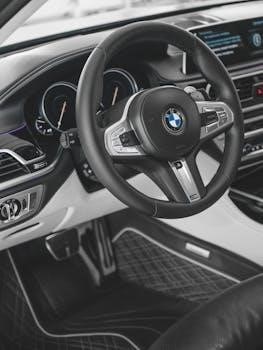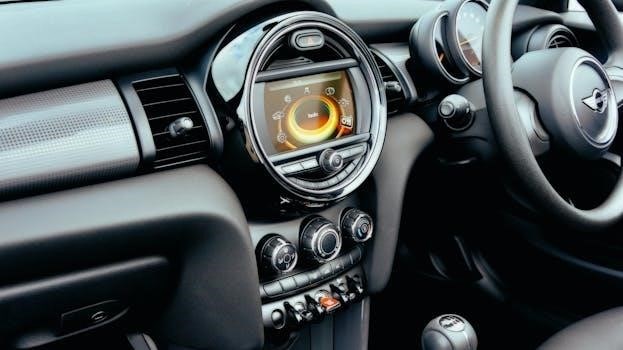Overview of Manual to Automatic Conversion Costs in the UK
Converting from manual to automatic transmission in the UK involves significant financial commitment. Costs vary widely, influenced by vehicle type, parts availability, and labour rates. Expect complexities and potential unexpected expenses during the process.
Complexity of Conversion
Manual to automatic transmission conversion is a complex task, not a simple swap. It requires a deep understanding of automotive mechanics and electronics. The process involves changing not just the gearbox but also the torque converter, wiring, and potentially the car’s computer systems. This level of intricacy means the work must be carried out by a qualified professional to ensure safety and correct functionality. Furthermore, the vehicle’s original design may present unique challenges during the conversion.
Factors Affecting Conversion Price
Several factors influence the cost of converting from manual to automatic. These include the vehicle’s make, model, age, and the availability of necessary parts, which can greatly affect the overall price.
Vehicle Model and Age
The specific model and age of your vehicle significantly impact conversion costs. Older vehicles may have fewer readily available parts, potentially increasing expenses. Conversely, converting a newer model might involve more complex electronics, necessitating specialized expertise and thus leading to higher labour charges. The compatibility of the automatic transmission with the existing chassis also plays a crucial role in the overall pricing;
Availability of Parts
The ease with which necessary parts can be sourced directly affects the total conversion cost. If specific automatic transmission components are rare or need to be imported, prices will escalate. Vehicles with readily available aftermarket or used parts will typically have lower conversion costs. The time taken to acquire these parts can also extend the overall project duration, impacting labour expenses as well.

Labour Costs for Conversion
Labour expenses are a substantial factor in the overall conversion cost. These costs depend on whether the work is done in a professional garage or undertaken as a DIY project.
Garage vs DIY Conversion
Choosing between a garage and DIY conversion significantly impacts labour costs. Garages offer expertise and tools, but at higher rates, often including a fixed labour charge plus parts costs. DIY conversions can save money on labour but require mechanical skills, specialized tools, and could lead to potential complications if not done correctly. It is important to also consider the time commitment needed for a DIY project.
Estimated Labour Hours
Labour hours for a manual to automatic conversion can vary, with some estimates suggesting around 7 hours for a basic swap. More complex conversions involving additional modifications or older vehicles might require significantly more time. Factors like the complexity of wiring and component replacement directly influence the final labour hours, impacting overall cost. Thorough research and precise calculations are vital.

Parts Required for Conversion
Essential parts include the automatic transmission, torque converter, and associated wiring. Depending on the vehicle, a new center console and gear shift knob may also be needed for the conversion.
Transmission and Torque Converter
The automatic transmission is the core component for this conversion, replacing the manual gearbox. A torque converter is also crucial, as it transfers power from the engine to the transmission, differing significantly from the clutch system in manual vehicles. Selecting compatible and reliable parts is vital for the successful conversion process. These components are the heart of the system.
Wiring and Electronics
Automatic transmissions require a complex network of wiring and electronic components. This includes the transmission control unit, sensors, and associated wiring harnesses. Integrating these systems into a vehicle originally designed for manual operation can be intricate. Proper installation and compatibility are crucial to ensure seamless functionality and prevent electrical issues. These can impact the overall cost.
Additional Costs to Consider
Beyond core components, factor in potential unexpected issues and post-conversion adjustments. These include software updates, sensor recalibration, and addressing any unforeseen mechanical or electrical complications. Budget for these extra expenses.
Potential for Unexpected Issues
During a manual to automatic conversion, unforeseen problems can arise, including compatibility issues with the vehicle’s existing electronics, wiring harness complications, and the need for additional custom fabrication. These unexpected hurdles can significantly inflate the overall cost. Be prepared for potential delays and extra expenses to address these complications, ensuring a successful and reliable conversion process, and have a contingency fund.
Post-Conversion Adjustments
After completing a manual to automatic transmission conversion, various adjustments may be necessary. These could include fine-tuning the gear ratios, recalibrating the engine control unit (ECU) to accommodate the new transmission, and addressing any sensor discrepancies. Also, ensure proper alignment and fluid levels are checked. These post-conversion adjustments are crucial for optimal performance and may incur additional costs, so factor in these potential expenses when planning your budget.

Pros and Cons of Manual to Automatic Conversion
Automatic conversions offer ease of driving and potentially better power handling. However, they are expensive, complex, and may reduce driver engagement, so weigh the benefits against the drawbacks.
Advantages of Automatic Transmission
Automatic transmissions provide a smoother, more relaxed driving experience, particularly beneficial in heavy traffic. They eliminate the need for manual gear changes, reducing driver fatigue and allowing for increased focus on the road. Additionally, automatic systems can often handle higher engine power outputs, potentially extending the lifespan of the drivetrain. This ease of use makes them popular with many drivers in the UK.
Disadvantages of Automatic Conversion
Automatic conversions are complex, often costing more than the vehicle’s value, with potential issues arising from mismatched components or incorrect installations. The process can lead to decreased fuel efficiency and altered vehicle handling. Furthermore, it may be difficult to find mechanics skilled in this specific type of conversion. It can be very time consuming and disruptive. These conversions could affect the future resale value of the car.
Alternatives to Conversion
Instead of conversion, consider selling your manual car and purchasing an automatic model. Exploring other vehicle modifications might be more cost-effective and less complex than a full transmission conversion.
Selling and Buying an Automatic
A practical alternative to a manual to automatic conversion is selling your existing manual vehicle and purchasing a car already equipped with an automatic transmission. This approach often proves more economical, bypassing the complexities and costs associated with a full conversion. It also provides a quicker solution, allowing you to enjoy an automatic driving experience immediately, without the hassle of extensive modifications. Consider this option for a simpler transition.
Exploring Other Modifications
Before committing to a manual to automatic transmission conversion, consider other vehicle modifications that might address your driving needs. Options like short-throw shifters or clutch upgrades can enhance the manual driving experience. These alternatives may prove less costly and complex than a full conversion. Assess whether these modifications offer a viable solution that aligns with your preferences and budget, potentially avoiding the extensive work of a complete transmission swap.

Specific Examples of Conversion Costs
Conversion costs vary greatly. A Mini conversion might range from £850 to £950 for labour and parts, while other vehicles require custom quotes. Prices depend on vehicle specifics.
Mini Conversion Example
For a Mini, converting from automatic to manual transmission has a somewhat fixed price. Expect to pay around £850 for labour and parts, potentially rising to £950 if it’s a Japanese import with factory-fitted air conditioning. This service typically requires the car to be at the workshop for a minimum of three days, highlighting the scope of the work involved, this is the only example that has fixed pricing.
Other Vehicle Examples
Conversion costs for other vehicles vary significantly. Some older cars might present challenges due to differing body designs, impacting the complexity and price of the conversion; Estimates range from £1,000 for DIY jobs using junkyard parts to over £4,000 when using a professional shop. The availability of an automatic version of your car will affect how easy and therefore how costly it will be to convert.
Finding a Reputable Conversion Specialist in the UK
Choosing a qualified mechanic is essential for a successful conversion. Look for specialists with experience in transmission conversions and check reviews to ensure a high standard of work.
Importance of a Qualified Mechanic
A qualified mechanic is crucial for a manual to automatic conversion, ensuring the complex process is handled correctly. They possess the necessary technical expertise to manage intricate wiring, transmission installation, and potential compatibility issues. Choosing an experienced professional minimizes the risk of errors, ensures safety, and can prevent costly future repairs. A reputable mechanic provides peace of mind, knowing your vehicle is in capable hands.
Checking Reviews and Experience
Before entrusting your vehicle for a manual to automatic conversion, it’s vital to check reviews and experience. Look for testimonials that highlight the mechanic’s proficiency in similar conversions. Verify their track record with complex projects and assess customer feedback regarding their service quality. Positive reviews and substantial experience indicate a higher likelihood of a successful and reliable conversion. This step helps avoid potential problems and ensures your investment is worthwhile.
